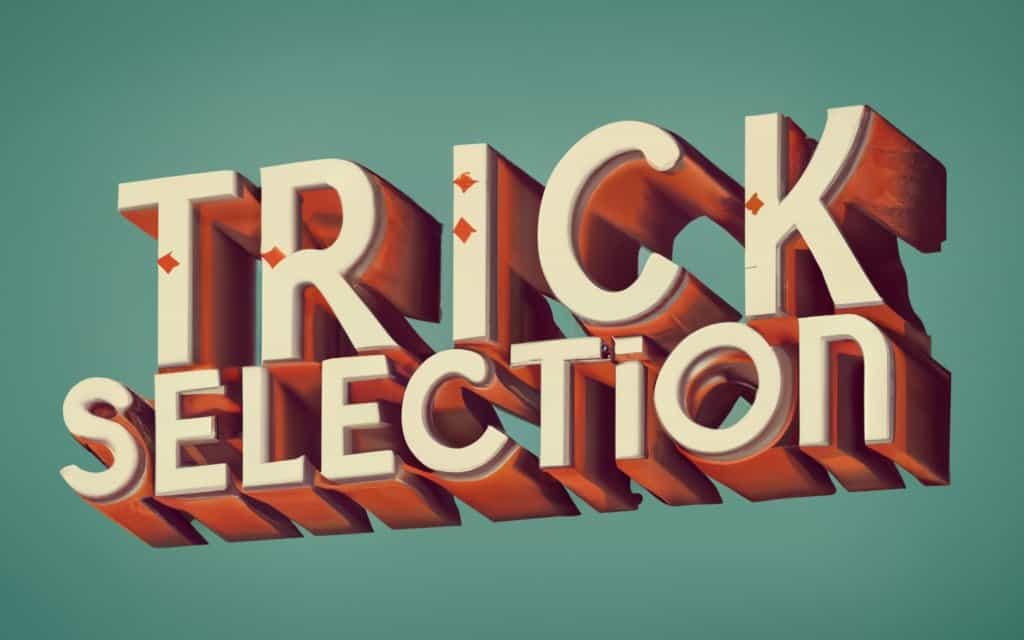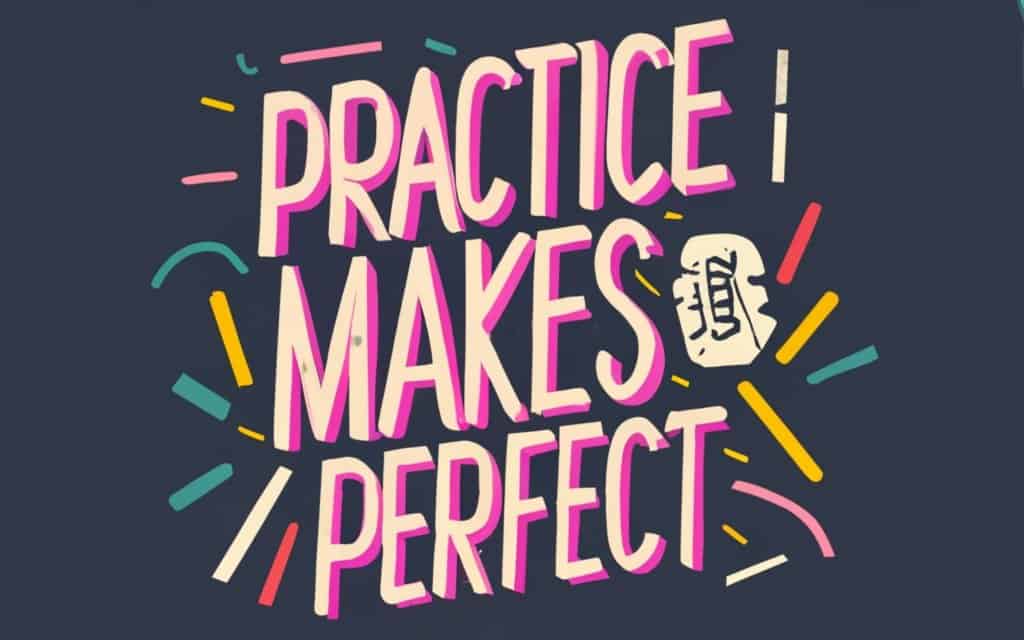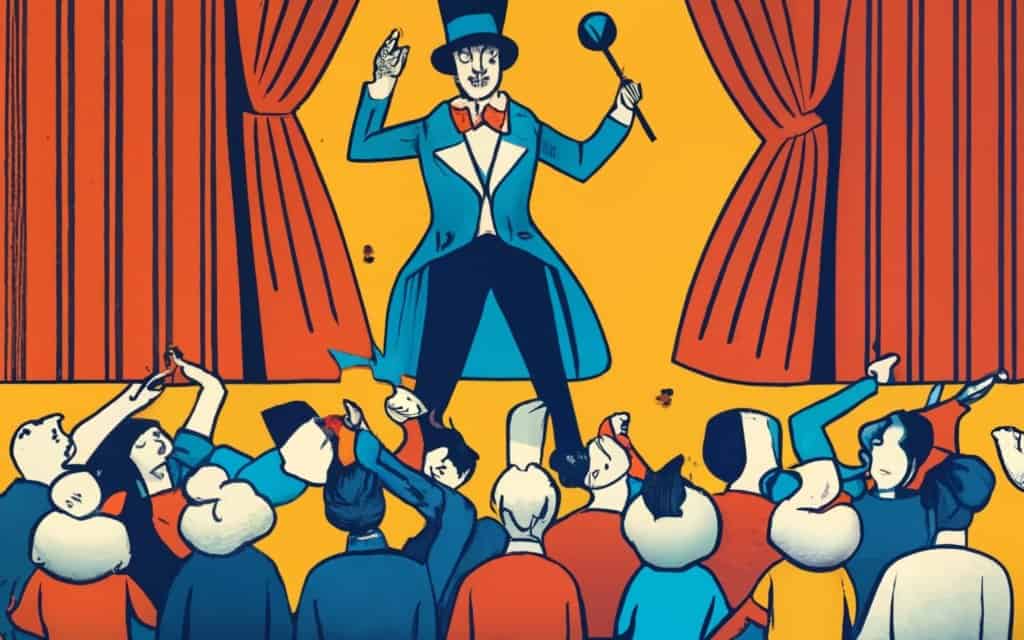The Art of Magic Performance

You’ve come here to look for magic tricks for performing shows. Bravo! You are at the right place!
As magicians, we know that the performance is equally, if not more, important than the tricks themselves when it comes to captivating an audience. Understanding the art of magic performance and avoiding common pitfalls can transform an ordinary magic show into an unforgettable experience.
Understanding the Importance of Performance in Magic
Magic is about more than just showcasing a series of tricks; it’s about creating an experience that leaves the audience in awe. The performance aspect of magic involves engaging the audience, setting the mood, and telling a story. Every move, every word, every expression contributes to the overall impact of the performance.
When done right, the performance can enhance the effect of the tricks and make them more compelling. It can build anticipation, create suspense, and elicit emotional responses from the audience. In other words, it’s the performance that takes the tricks from mere feats of skill to a captivating spectacle. To dive deeper into the art of stagecraft in magic, explore our article on stagecraft for performing shows.
Common Mistakes to Avoid When Choosing Magic Tricks for Performing Shows
When it comes to performing magic, there are several common mistakes that can detract from the audience’s experience.
- Too many tricks, too little time: Overloading your show with too many tricks can make it seem rushed and confusing. Instead, carefully select a variety of stage magic tricks and close-up magic tricks for shows that you can perform smoothly and confidently.
- Neglecting audience engagement: Ignoring the audience or failing to involve them in the performance can make the show feel impersonal and dull. Make sure to interact with the audience, involve them in the tricks whenever possible, and respond to their reactions.
- Poor presentation: Even the most fascinating tricks can fall flat if they’re not presented well. Pay attention to your body language, vocal inflection, and facial expressions. Practice your patter and make sure it’s clear, engaging, and appropriate for the trick and the audience.
- Lack of rehearsal: Without sufficient practice, even the simplest tricks can go wrong. Make sure to rehearse not just the tricks, but also the entire performance, including your patter and audience interactions. Check out our magic show performance tips for more advice.
Remember, the goal is not just to perform tricks, but to create a magical experience for the audience. By understanding the importance of performance in magic and avoiding common mistakes, you can elevate your magic shows to new heights.
Selecting Your Magic Tricks for Performing Shows

Making your selections of which magic tricks for performing shows that you’ll use… now that’s a whole different scary topic. It’s not just about the tricks you know; it’s about choosing the right ones that will captivate and engage your audience. Luckily, we’ve got you covered. If you want to learn how to turn your magic tricks into routines then you should check out our in-depth article about Strategic Astonishment here.
Recap about magic tricks for performing shows…
Factors to Consider When Choosing Tricks
When choosing the tricks for your magic show, consider the following factors:
- Audience Expectation: Understand your audience’s expectations. Are they expecting a mixture of illusions and sleight of hand, or are they more interested in mind-reading and mentalism?
- Environment: The environment or venue where you’re performing also plays a crucial role. For example, if you’re performing on a large stage, stage magic tricks would be more appropriate. However, if you’re in a close-up situation, close-up magic tricks for shows would be more suitable.
- Skill Level: Choose tricks that are within your skill level. While it’s always good to push yourself, a magic show is not the place to be trying out a trick for the first time.
- Is Uniqueness Important? Not at first. We suggest you learn some of the classics or tricks that are proven winners. We have a list of them here. As you progress, select tricks that are unique and different from what other magicians are doing. Or change a classic trick into something unique. This will make your performance stand out and be memorable.
- Thematic Consistency: If your show has a particular theme, choose tricks that align with this theme.
Variety and Sequence of Tricks
In addition to the type of tricks, you should also consider the variety and sequence of tricks in your show.
- Variety: A good magic show should have a variety of tricks, including illusions, manipulations, and mind-reading, among others. This keeps the audience engaged and guessing what will happen next.
- Sequence: The sequence of your tricks can significantly impact the flow and momentum of your show. Start with some easier tricks to build your confidence and engage the audience. Gradually move to more complicated tricks as the show progresses. End with your most impressive trick to leave the audience with a lasting impression.
Here’s an example of a sequence:
| Sequence | Type of Trick
|
|---|---|
| Opener | Quick Card Trick |
| Middle | Audience participation Illusion |
| Closer | The best Levitation Ever |
Remember, the key to a successful magic show is to entertain and engage your audience. The tricks you choose should not only showcase your skills as a magician but also create a memorable experience for your audience. For more tips on improving your magic show performance, check out our article on magic show performance tips.
Refining Your Techniques on Magic Tricks for Performing Shows

Perfecting your skills is fundamental when it comes to delivering memorable magic tricks for performing shows. This process involves diligent practice and a keen understanding of how precision and timing can make or break a trick.
Practice Makes Perfect
The adage “practice makes perfect” is particularly applicable in the field of magic. To captivate your audience and deliver a seamless performance, it’s essential to spend significant time honing your craft. During this process, it’s crucial to practice individual tricks until you can perform them flawlessly. Not only does this improve your confidence, but it also helps you to create a seamless flow between tricks, making your performance more engaging.
Consider setting a regular practice schedule and sticking to it. This consistency can drastically improve your skills over time. Here’s a sample practice schedule:
| Day | Practice Focus
|
|---|---|
| Monday | Card tricks |
| Tuesday | Stage magic tricks |
| Wednesday | Close-up magic tricks |
| Thursday | Timing and Precision |
| Friday | Full routine rehearsal |
| Weekend | Rest and review |
Each day, focus on a different aspect of your performance, including specific types of tricks like card tricks or stage magic tricks. Remember, thorough practice is the key to delivering a captivating and flawless magic show.
If you are a CC Club member, we have a wonderful “practice timer” located inside the club and it’s free for members to use. This thing will help you make real progress.
The Importance of Precision and Timing
While mastering the mechanics of a trick is important, understanding the significance of precision and timing is what truly elevates a magic performance. Precision refers to the accuracy and exactness of your movements, while timing is about when and how these movements are executed.
Perfecting your precision can be the difference between a successful trick and a revealed secret. Every movement, from the flick of a wrist to the positioning of a prop, should be carried out with utmost care and accuracy.
Timing, on the other hand, plays a crucial role in building suspense and capturing your audience’s attention. The right pause at the right time can enhance the impact of a reveal, while swift and fluid movements can make a trick seem more magical.
A good understanding of precision and timing can also help you handle unexpected situations during a show. For example, if a trick doesn’t go as planned, a well-timed distraction or a precise change of plan can save the performance.
In conclusion, refining your techniques is an integral part of preparing magic tricks for performing shows. By dedicating time to practice and understanding the importance of precision and timing, you can greatly enhance your performance and leave your audience spellbound. For more performance tips, check out our article on magic show performance tips.
Engaging Your Audience

In any magic performance, audience engagement is paramount. A magician’s skill in engaging the audience can often be more impactful than the actual magic tricks for performing shows. This audience engagement is achieved through storytelling and building tension and excitement.
The Art of Storytelling in Magic
Storytelling is a powerful tool in a magician’s arsenal. A well-told story can captivate an audience, draw them into the magic, and make the tricks more engaging and memorable. When you weave a captivating narrative around your tricks, you’re not just performing magic, but telling a story that your audience can invest in emotionally.
A good story can give context to your tricks, making them more than just feats of sleight of hand. For example, a story about finding a lost treasure could accompany a trick involving a disappearing coin, or tale of a time traveller may make a card trick more intriguing. The key is to make the story relevant to the trick and interesting for the audience.
The art of storytelling in magic involves more than just the words. It’s about how you use your body language, tone of voice, and facial expressions to bring the story to life. For more tips on stagecraft and storytelling, check out our guide on stagecraft for performing shows.
Building Tension and Excitement
Building tension and excitement is another essential aspect of engaging your audience. Tension makes your audience anticipate the outcome of your trick, while excitement makes them react to the magic when it happens.
You can build tension through your storytelling, by setting up a challenge or conflict that your trick will resolve. For example, you might tell a story about a locked box that no one can open, before revealing that your trick is to unlock it without a key.
Building excitement involves timing your trick to maximize the dramatic impact. This might mean pausing before the climax of your trick, drawing out the moment to increase the audience’s anticipation. When the climax finally comes, the audience’s excitement will be at its peak.
Remember, the goal of building tension and excitement is to make your audience care about the outcome of your tricks. When they’re invested in your performance, they’ll be more engaged and enjoy the show more. For more tips on creating an engaging routine, see our article on magic show performance tips.
In summary, engaging your audience is a vital part of performing magic tricks for shows. By mastering the art of storytelling and building tension and excitement, you can captivate your audience and make your performance unforgettable.
Advice for Showmanship
Being successful in performing magic tricks isn’t just about mastering the techniques. Showmanship is just as important. It’s about presenting your tricks in a way that’s engaging, entertaining, and unforgettable. In this section, we’ll discuss creating a unique stage persona and using humor and interaction in your performance.
Creating a Unique Stage Persona
This is a more advanced topic but something to look forward to as you develop your skills. Your stage persona is the character you portray during your performance. It’s an extension of your personality, but it’s also a tool to connect with your audience. Your persona sets the tone for your performance and can greatly influence how your magic tricks for performing shows are perceived.
To create a unique stage persona, start by thinking about your personal interests, strengths, and style. What kind of magician do you want to be? Do you want to be mysterious and enigmatic, or friendly and approachable? Remember, your persona should be authentic and comfortable for you to portray.
Next, consider your audience. What kind of character will they connect with or find entertaining? For instance, if you’re performing at a children’s party, a fun and energetic persona might be most effective.
Finally, make sure your stage persona is consistent. This includes your costume, props, language, and even how you handle your magic tricks. Consistency helps your audience understand and connect with your character.
For more advice on creating a compelling stage persona, check out our article on stagecraft for performing shows.
Using Humor and Interaction in Your Magic Tricks for Performing Shows
Humor and interaction are powerful tools in a magician’s repertoire. They can break the ice, engage the audience, and make your performance more memorable.
Humor can lighten the mood and make your audience more receptive to your tricks. It can also be used to distract your audience at key moments. However, ensure your humor is appropriate for your audience and fits with your stage persona.
Interaction is also crucial in engaging your audience. This can be as simple as asking for a volunteer, or as elaborate as involving the whole audience in a trick. Interaction makes your audience feel like they’re part of the performance, rather than just spectators.
But remember, mastering humor and interaction requires practice, just like your magic tricks. Experiment with different styles and techniques, and observe your audience’s reactions. Over time, you’ll develop a sense of what works best for you and your audience.
For more tips on improving your magic show performance, check out our article on magic show performance tips.
In conclusion, a strong stage persona, combined with effective use of humor and interaction, can significantly enhance your magic performance. These elements of showmanship, together with your magic skills, will help you create a captivating and enchanting show.
Nailing Your Routine When Executing Magic Tricks for Performing Shows
When it comes to executing magic tricks for performing shows, one of the key elements is nailing your routine. This encompasses not only the tricks you perform but also how you plan and rehearse your show. Additionally, it involves how you manage stage fright and unexpected situations that may arise.
Planning and Rehearsing Your Magic Tricks for Performing Show
When planning your magic show, it’s important to consider the flow and sequence of your tricks. Your routine should have a logical progression, building from simpler tricks to more complex ones, or from tricks that set the stage for a grand finale. Make sure to include a mix of different types of tricks, such as stage magic tricks and close-up magic tricks for shows, to keep your audience engaged and entertained.
Once you’ve planned your routine, it’s time to rehearse. Practice is essential to ensure you can execute your tricks flawlessly and with confidence. Rehearse your routine in the exact order you plan to perform it, and try to replicate the conditions of your performance as closely as possible. This includes using any props or equipment you’ll be using on the day of the show. If possible, practice in front of a small audience to get feedback and adjust your routine as needed.
Tips for Dealing with Stage Fright and Unexpected Situations
Even seasoned performers can experience stage fright. The key is to use this energy to your advantage. Deep breathing exercises can help reduce anxiety and calm your nerves before a performance. Conjuror Community Co-Founder, Adam Grace, has a way he always deals with nerves.
“I take four deep breaths. Each one goes in slow and then I hold it in for four seconds each. Then, let it out slowly.” –Adam Grace
According to this site, doing this kind of breathing summons your parasympathetic nervous system, also known as your rest-and-digest system, and helps stimulate relaxation to return everything to equilibrium. You take in more oxygen, your heart rate slows, and your mind starts to slow down.
Visualization techniques, where you imagine yourself performing successfully, can also boost your confidence.
It’s also important to be prepared for unexpected situations. Props might fail, or tricks might not go as planned. In such cases, it’s crucial to stay calm and maintain your composure. Having a backup plan can be helpful. This might include having extra props on hand, or having a few additional tricks up your sleeve that you can perform if needed.
Remember, the audience is there to be entertained. Even if things don’t go perfectly, your ability to handle the situation with grace and humor can make the show even more memorable.
For more tips on how to perfect your magic show performance, check out our article on magic show performance tips.
If you really want to make some progress, think about joining the CC Club and surround yourself with other pros and serious hobbyists.
With proper planning, rehearsing, and a confident mindset, you can enchant the crowd with your magic skills and put on a show that will be remembered.

